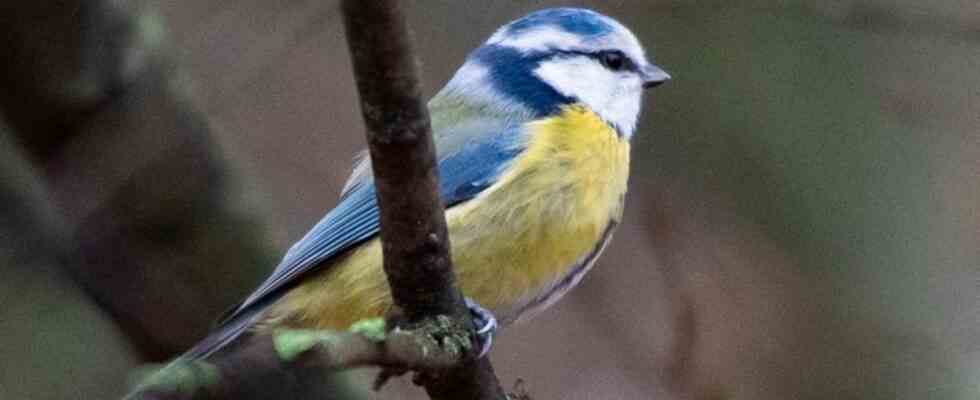natural reserve
Fewer birds sighted in counting campaign
A blue tit is sitting on a branch. photo
© Christophe Gateau/dpa
More than 77,000 people registered almost 1.9 million birds in the hands-on campaign “Hour of the Winter Birds” that they had counted in the garden, in the park, in front of the balcony or in front of the window.
Fewer sighted birds and hobby observers – the wet and gray weather last weekend clouded the interim balance at the “Hour of the Winter Birds”.
More than 77,000 people reported almost 1.9 million birds that they had counted in the garden, in the park, in front of the balcony or in front of the window . Often several people count together at one point. As in the previous year, the house sparrow, great tit and blue tit showed up most frequently at the feeding stations.
On average, the volunteers sighted 33.9 birds per counting point – and thus fewer than the average of 35.5 birds in 2022. This was also due to the comparatively high temperatures at the weekend and in the run-up to it, as birds then spread out more across the landscape, said Nabu bird protection expert Martin Rümmler.
The influence of the mild winter
Added to this, according to Nabu, are the mild winters in the breeding areas and the large amount of food available in nature. Typical winter guests from northern and eastern Europe, such as the mountain finch, showed up less frequently at the feeder than last year, said Nabu federal manager Leif Miller. “They probably stayed in their breeding areas because of the mild winter.”
Forest birds such as chaffinches and jays were also seen less frequently, as suspected by the nature conservation associations, because they can apparently find enough acorns, beechnuts and spruce seeds in the forest due to the mast year. Collared pigeons and wrens, on the other hand, were more frequent, and according to the Nabu they are benefiting from the rising temperatures.
The bad weather also affected the number of participants, Miller said. A year ago, more than 176,000 people took part. However, the current figures are not yet complete. Citizens can report their observations until January 16th.

